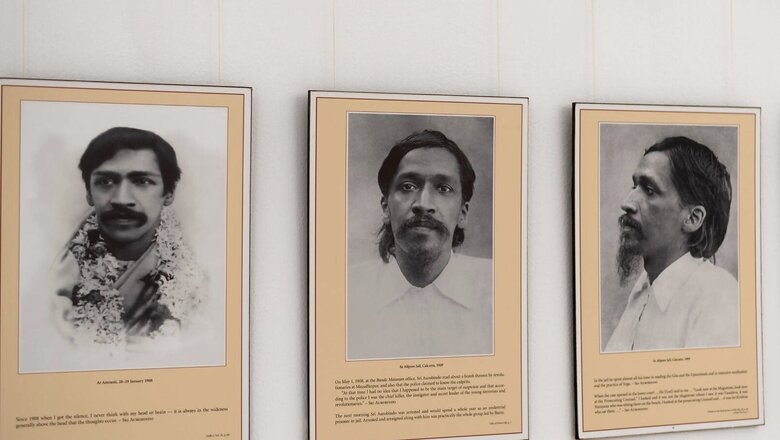
views
As he paid glowing tributes to India’s freedom struggle and laid the roadmap for a self-sufficient and robust country in the coming years, Prime Minister Narendra Modi — like every year — paid tributes to philosopher and sage Sri Aurobindo on his 150th birth anniversary which coincides with Independence Day.
Speaking from the ramparts of the Red Fort on Monday on the occasion of the country celebration 75 years of independence, PM Modi said: “As we celebrate Aurobindoji’s birthday, let us ensure we follow his mantra ‘Swadeshi se Swaraj, Swaraj se Suraaj’," giving the call for an ‘Aatmanirbhar’ Bharat.
So, who is Sri Aurobindo and why did he get such effusive praise from the prime minister? News18 explains:
Early life
Aurobindo Ghose, popularly known as Yogi Rishi Aurobindo, was a revolutionary, nationalist, poet, educationist and philosopher. He was born on August 15, 1872, in Calcutta. An inspirational leader who rebelled against the British Empire, he led the young people of the country towards the path of spirituality. While he was in Alipur Jail from 1908 to 1909, he spent his time on meditation, perception and yoga. He also studied Indian philosophy and vedas and became a yogi.
When he was seven years old, Sri Aurobindo was sent to England with his brothers for education. He studied under the tutelage of Reverend WH Drewett in Manchester, where he learnt Latin, Greek, German, Italian, French, Arithmetic and Geography.
Sri Aurobindo’s father wanted him to participate in the administrative service competition and serve the government at a higher position. He took the exam to fulfil his father’s wishes and became a state service officer in 1893.
Later, he worked as a teacher, Baroda College’s vice principal, and also as a secretary to Maharaja of Gaekwad – which gave him the opportunity of learning more about Indian culture.
The revolutionary
Aurobindo Ghose completed his education at King’s College in Cambridge, England, where he came in touch with Italian and Irish nationalists who made him see the struggle in India in a new light.
Aurobindo Ghose participated in an Indian students’ organisation called the Cambridge Majlis. Once he returned to India, he plunged into the freedom struggle, engaging with radical youths.
He urged people to suffer and sacrifice for the sake of the motherland and was of the opinion that passive resistance could very well turn into battle if the need arises.
Plunge into politics
It was in the 1890s that Sri Aurobindo began his political sojourn in India, rebuking the Congress for taking a moderate stance.
The Swadeshi movement of the early 1900s held his ideology evolve as he asked people to follow the path of passive resistance.
Sri Aurobindo and other extremists slammed the moderate wing of the Congress at the 1907 Surat session of party, soon after which the party split. By then, he was already leading radical youth organisations in Kolkata, including the Anushilan Samiti, which had been challenging British rule through militant tactics since 1902.
Aurobindo Ghose and a few other members of the Samiti were jailed in the Alipore bomb case in 1908 and though he was acquitted a year later due to lack of evidence, the one year in prison changed his political philosophy.
Path of spiritualism
Out of prison, Sri Aurobindo took a back seat from active politics and went into hiding at Chandernagore. He later moved to Puducherry — then a French colony — and dedicated himself in pursuits of spirituality and philosophy.
He started a philosophical magazine by the name Arya and later a number of books — such as ‘The synthesis of yoga’, ‘Essays on the Gita’, ‘The secret of the Vedas’, ‘The ideal of human unity’ — were brought out of it.
However, even when in Pondicherry, Aurobindo Ghose continued writing on politics along with philosophy.
Noted for work
Sri Aurobindo was also a journalist and his first philosophical magazine called Arya was published in 1914. His newspaper Vande Mataram got him enormous fame.
His work got him nominated for the Nobel Prize in Literature in 1943. He was also nominated in 1950 for the Nobel Prize for Peace.
Sri Aurobindo got married to a 14-year-old girl Mrinalini at the age of 28. She passed away in 1918 during an influenza outbreak. Aurobindo Ghose died on December 5, 1950.
Read the Latest News and Breaking News here

















Comments
0 comment